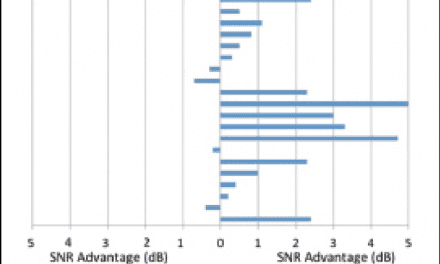According to research from the University of California, San Francisco (UCSF), brain circuits that grow noisier over time may be responsible for mental slowing as we age.
UCSF reports that new intracranial and electroencephalogram (EEG) research, published in a September 23, 2015 online article in The Journal of Neuroscience, supports the neural noise hypothesis that the signal-to-noise ratio in nerve circuits diminishes with aging and leads to worse performance. The studies were designed and conducted by Brad Voytek, PhD, when he worked as a postdoctoral research fellow in the lab of Adam Gazzaley, MD, PhD, professor of neurology, physiology and psychiatry at UCSF.
In studies that involved both young and older adult subjects, Voytek found that background noise in key cortical regions of the brain responsible for higher functions was associated with age, and this noise was also associated with poorer memorization of visual information. Voytek, who is now an assistant professor of cognitive science and neuroscience at UC San Diego, concluded that neural noise might be the mechanism behind aging-associated loss of cognitive ability, slowing of behavioral responses, and diminishing memories and concentration.
According to an announcement from UCSF, the noise measured in the studies was random signaling that did not fit the pattern of the brain’s natural oscillations, which are rhythmic patterns of electrical activity generated by nerve cells, or neurons, linked within the brain’s circuitry. This activity occurs in addition to electrical signals generated by individual neurons.
Brain oscillations have become the focus of recent research studies by Voytek and others seeking to find functional roles they might play. Early evidence suggests that oscillations might prime nerve circuits to respond more efficiently to stimuli.
“Imagine that individual neurons are like surfers,” Voytek said. “Nearby surfers experience the same waves, which are like the oscillations linking neurons in the brain. But like noise, additional interfering factors often disrupt the perfect wave at different times and different spots along the beach.”
In one experiment on 15 consenting subjects, Voytek collected and analyzed voltage measurements from electrodes placed directly in contact with cortical regions of the brain during surgery by neurosurgeons searching for the specific location that triggered patients’ seizures. The intracranial study design eliminated detection of confounding signals from muscle. The alert study subjects performed a listening task, which in one of Voytek’s earlier human studies resulted in a high degree of coordinated brain oscillations in these regions. In the new experiment Voytek’s research team found that noise in the frontal cortex and in the temporal cortex was associated with age.
In the second experiment, the researchers collected data from EEG electrodes placed on the scalps of 11 healthy participants between the ages of 20 and 30 and 13 healthy participants between the ages of 60 and 70, while the research subjects performed a visual memorization test.
The research team found that, on average, older subjects performed worse than younger subjects. The team determined that poorer performance was due to additional noise in nerve circuits in the visual cortex; neurons did not appear to coordinate as well in generating lower-frequency oscillations.
Voytek thinks these types of studies will allow neuroscientists to explore the neural underpinnings of cognitive changes across normal aging and in a variety of disease states that are associated with breakdowns in neural oscillations, including autism, Parkinson’s, and schizophrenia.
Source: Laura Kurtzman, UC San Francisco
Photo credits: Bradley Voytek, UC San Diego; UC San Francisco; Dreamstime







